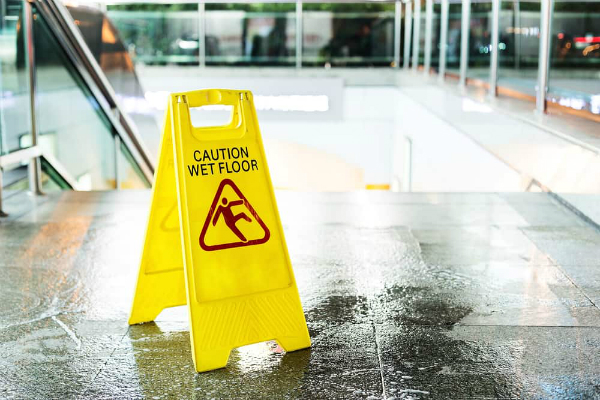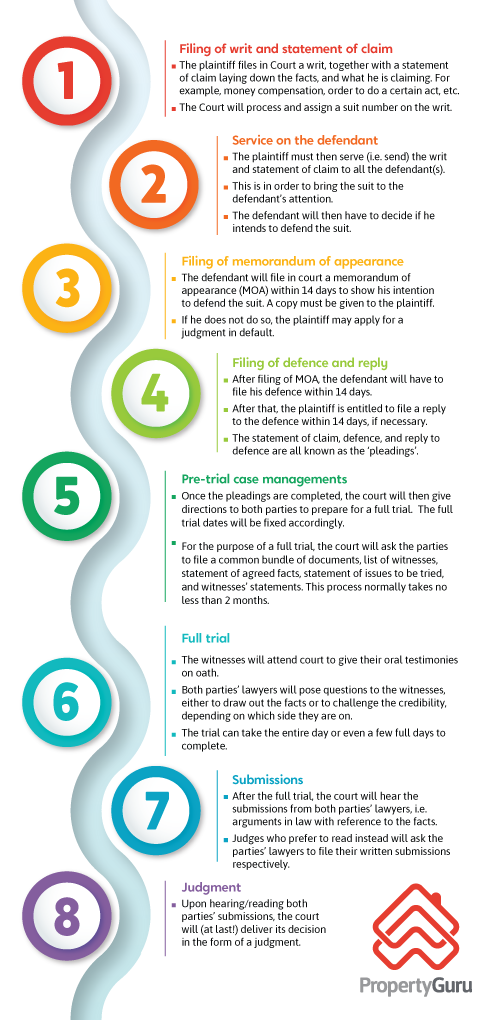Picture this: You’ve entered a building as a visitor, and as you’re walking down a flight of stairs, you accidentally slip on a small puddle of water and tumble all the way to the bottom!
Understandably, you’d be furious about the situation, and more than just a little shaken. You could’ve been seriously injured, or worse, died!
Is there ANYTHING you can do, like sue the owner, or the management? The answer to this will depend on whether either one has control over the building.
Under English common law (which applies in Malaysia), there’s something known as the “occupier’s liability”.
It’s where an occupier is under a legal duty (duty of care) to prevent any damage or injury to a visitor/invitee. This can be caused by unusual dangers on the premises, which he/she knows, or should’ve known.
The ‘unusual dangers’ here refer to the various hazards that aren’t usually found in the process of carrying out the normal tasks which the visitor/invitee has in mind.
So, who exactly is considered an occupier? Case laws have defined an occupier to be the following:
A person with sufficient degree of control over the premises, that he/she should realise that any failure on his/her part to use appropriate care, may result in an injury to a person coming lawfully there.
Thus, it’s not necessary to have entire control or exclusive occupation of the building and its compound. Some degree of control would already be considered sufficient.
Hence, there may be more than one occupier involved, if it can be shown that they’re in charge. For example, both the owner and the building management.
If you wish to sue the occupier for an injury caused in the building, the burden lies on you to prove that the occupier knew or should have known about the unusual danger, BUT failed to do anything about it.
However, if the occupier has put up a proper warning sign to alert you (or anyone else), then the Court may find that the occupier has already taken sufficient action to carry out his/her duty (duty of care) in preventing damage or injury.
After all, everything depends on the facts and the evidence produced, in order to prove who’s really the one at fault.
The legal process involved
So, let’s say you’ve found enough evidence as to who should be charged for your embarrassing fall down the flight of stairs. What’s next?
In a civil action, the person suing is known as the ‘plaintiff’ whereas the person being sued is known as the ‘defendant’.
There are several types of originating processes in a civil action such as the usage of a writ, originating summons, or petition.
PropertyGuru Tip
An originating process simply refers to the formal procedure that you take to start a legal case going.
For a claim where the parties involved have a significant disagreement over the facts, you can start the civil action by filing a writ in Court.
You can refer to the flowchart below for a brief overview on the procedures involved:
It’s to be noted here that the flowchart is merely a simplified version of what may take place.
Civil actions that begin by way of a writ will (in most cases) go up to a full trial, followed by the court delivering its decision, better known as a ‘judgment’.
Based on current trends, the court can finish most cases within 9 months. However, some may take a longer time due to the parties filing interlocutory applications or requesting for postponement.
Interlocutory applications are basically requests which are filed in the midst of an ongoing suit to obtain a certain court order, for example:
- Amend documents.
- Transfer the suit to another court.
- To strike out a frivolous case (a lawsuit that has the intention of harassing, annoying, or disturbing the opposite party).
- Injunct someone from doing certain act.
PropertyGuru Tip
To ‘injunct’ someone means that you want the court to issue a legal order to stop him/her from doing something. The more you know!
Now, anyone who isn’t satisfied with the court order or judgment can also appeal to higher courts, which will take more time and costs.
But above all, if you want to sue someone, make sure you engage a lawyer to represent you in court. It’s always best to have a legal professional to advise you on the laws involved, and the procedure relevant to your facts.
—–
Allen Khor is an advocate & solicitor in Messrs Allen Khor & Partners. His areas of practice include conveyancing, civil litigation, divorce, probate and administration. The telephone number of the firm is 012-283 0656.
*This column is for your information only and does not constitute legal advice for your specific needs. It cannot disclose all of the risks and other factors necessary to evaluate a particular situation. You should seek and obtain independent legal or professional advice for your specific needs and situation.
Disclaimer: The information is provided for general information only. PropertyGuru International (Malaysia) Sdn Bhd makes no representations or warranties in relation to the information, including but not limited to any representation or warranty as to the fitness for any particular purpose of the information to the fullest extent permitted by law. While every effort has been made to ensure that the information provided in this article is accurate, reliable, and complete as of the time of writing, the information provided in this article should not be relied upon to make any financial, investment, real estate or legal decisions. Additionally, the information should not substitute advice from a trained professional who can take into account your personal facts and circumstances, and we accept no liability if you use the information to form decisions.





